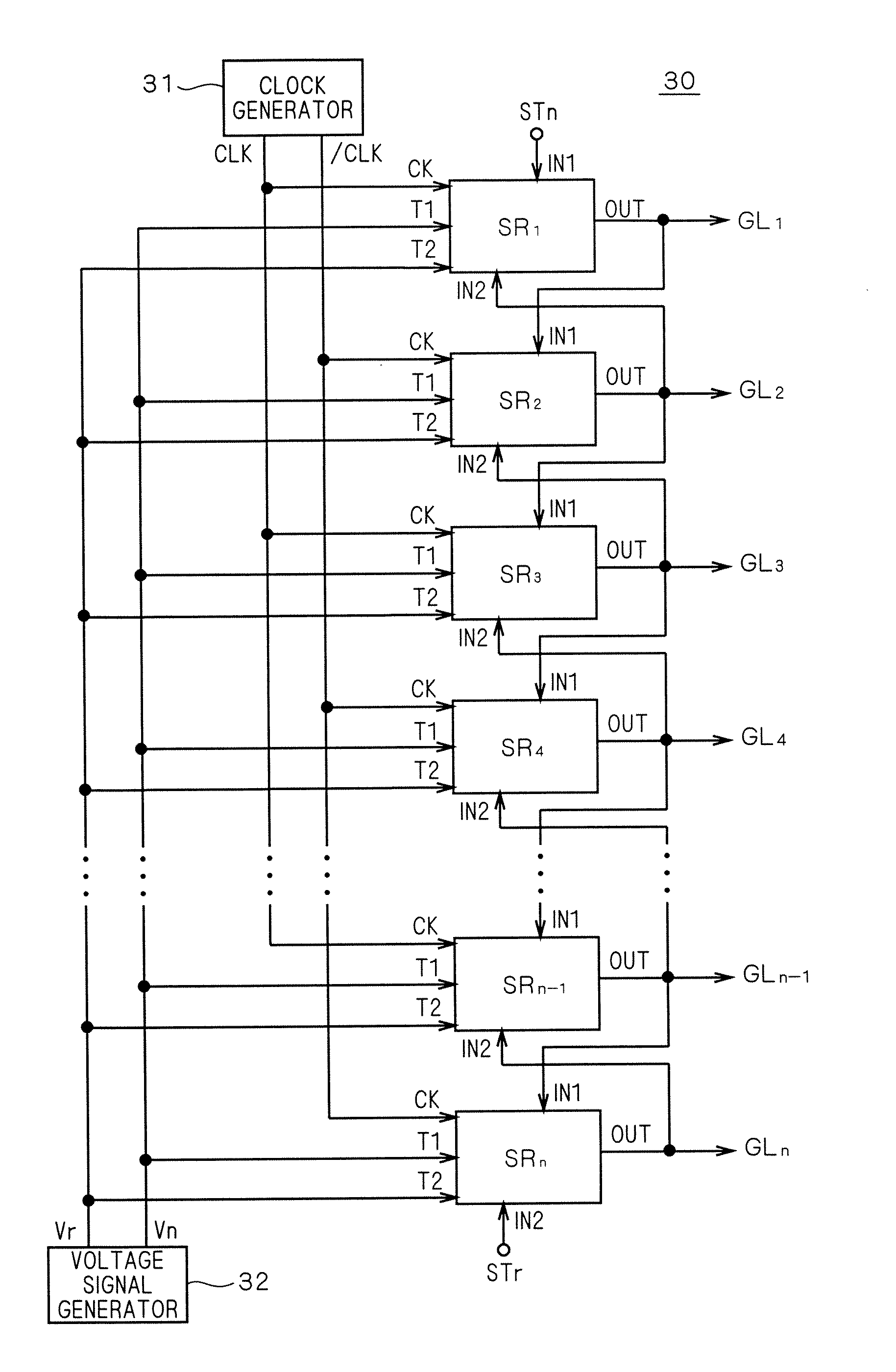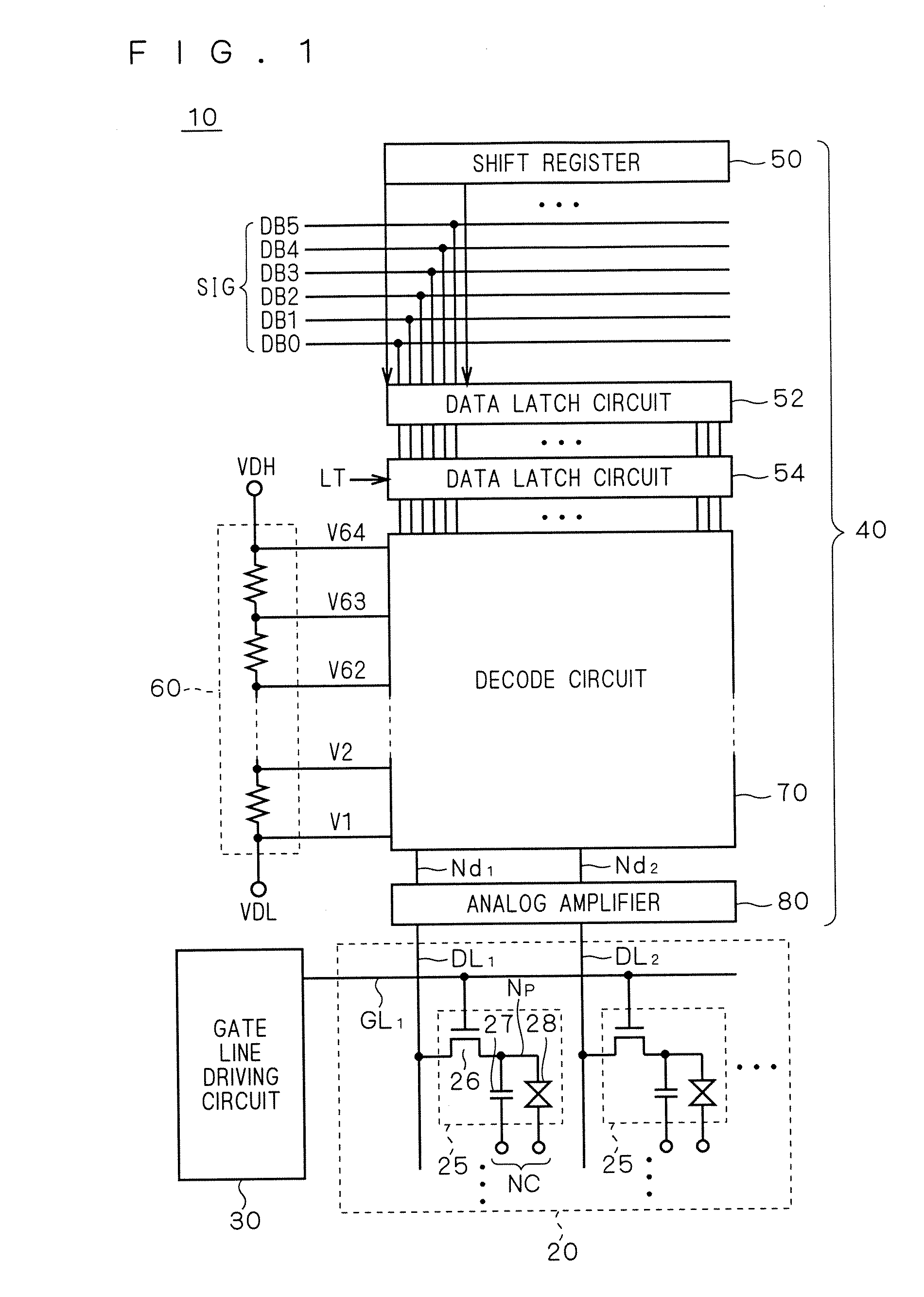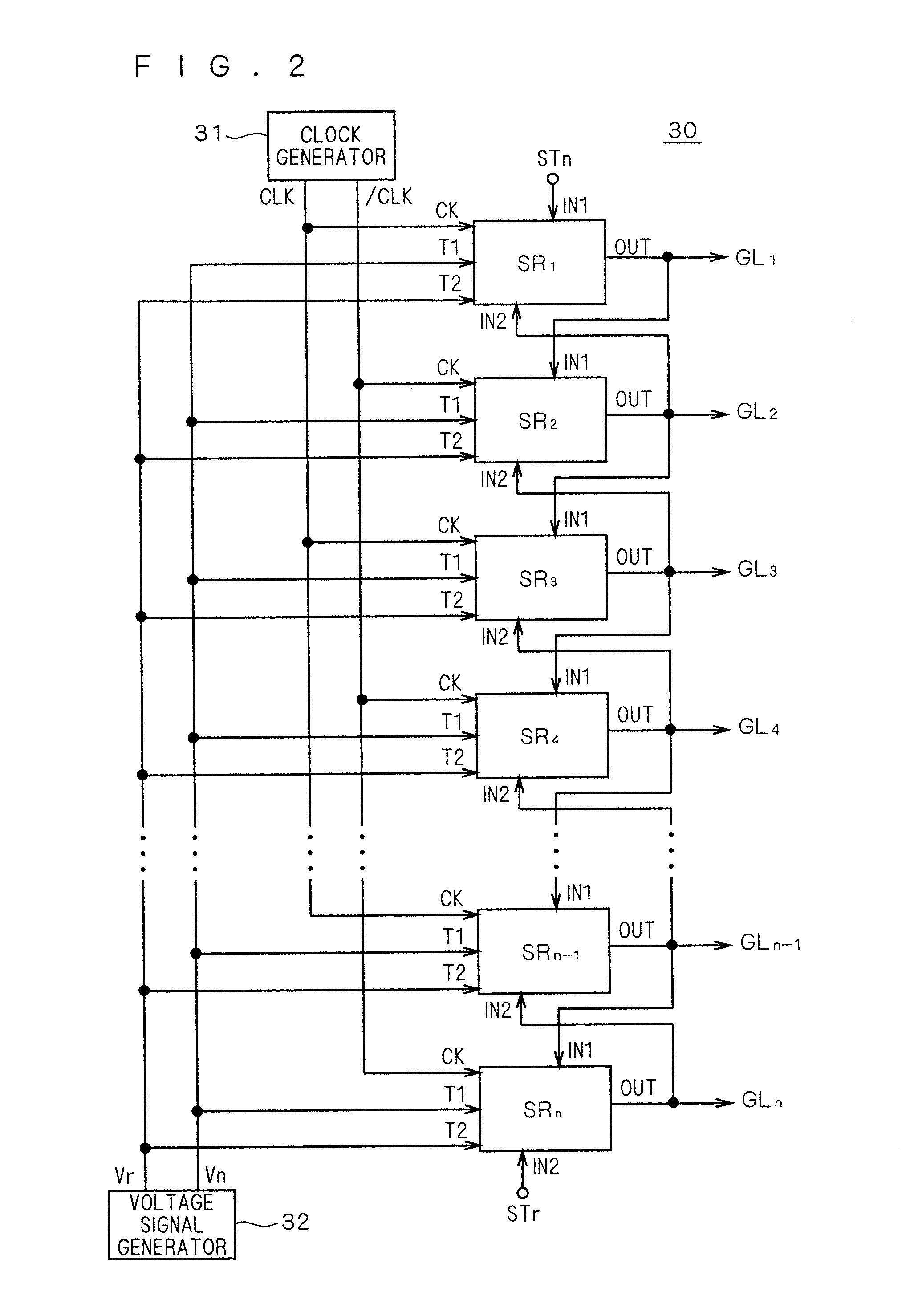Shift register circuit and image display apparatus equipped with the same
a register circuit and image display technology, applied in the direction of static storage, digital storage, instruments, etc., can solve the problems of unnecessarily activating the gate line, rewriting the pixel, and displaying defects, so as to achieve the effect of suppressing malfunction
- Summary
- Abstract
- Description
- Claims
- Application Information
AI Technical Summary
Benefits of technology
Problems solved by technology
Method used
Image
Examples
first embodiment
[0067]FIG. 1 is a schematic block diagram showing the configuration of a display apparatus according to a first embodiment of the present invention, showing the entire configuration of a liquid crystal display apparatus 10 as one example of the display apparatus.
[0068]The liquid crystal display apparatus 10 includes a liquid crystal array section 20, a gate line driving circuit (scanning line driving circuit) 30, and a source driver 40. As to be apparent from the description below, the bi-directional shift register according to the embodiment of the present invention is mounted on the gate line driving circuit 30, and is integrally formed with the liquid crystal array section 20.
[0069]The liquid crystal array section 20 includes a plurality of pixels 25 arranged in a matrix form. The gate lines GL1, GL2, . . . (collectively referred to as “gate line GL”) are arranged on each row of pixels (hereinafter referred to also as “pixel line”), and the data lines DL1, DL2, . . . (collectivel...
second embodiment
[0155]In the bi-directional unit shift register SR configured with a-Si TFT of first embodiment (FIG. 8), since the clock signal / CLK is input to the gate of the transistor Q2, the arise of problem in that the threshold voltage of the transistor Q2 shifts and the driving ability gradually lowers (fourth problem) is suppressed. However, the shift in the threshold voltage of the transistor Q2 is not completely eliminated, and the threshold voltage gradually shifts as the clock signal / CLK repeatedly becomes H level, and the above problem may ultimately arise. In second embodiment, the unit shift register SR capable of further suppressing such problem is proposed.
[0156]FIG. 13 is a circuit diagram showing the configuration of the unit shift register according to second embodiment. As shown in the figure, the source of the transistor Q2 is connected to the first clock terminal CK1. That is, one main electrode (drain) of the transistor Q2 is connected to the output terminal OUT, and the ...
third embodiment
[0160]As described using FIG. 10, when the gate-source voltage VGS(Q5) of the transistor Q5 exceeds the threshold voltage Vth(Q5) in time of rise of the output signal (Gk) in the bi-directional unit shift register SR of first embodiment, the current (I(Q5)) flows from the node N1 to the output terminal OUT via the transistor Q5. As described above, since only slight amount of current normally flows, and thus does not lower the level of the node N1 to an extent of influencing the driving ability of the transistor Q1, the current (I(Q5)) flowing through the transistor Q5 increases and the driving ability of the transistor Q1 may lower when the output load capacity is large and the rise of output signal is slow. The bi-directional unit shift register SR for resolving such problem is proposed in third embodiment.
[0161]FIG. 14 is a circuit diagram of the bi-directional unit shift register SR according to third embodiment. In the unit shift register SR shown in FIG. 14, the gate of the tr...
PUM
 Login to View More
Login to View More Abstract
Description
Claims
Application Information
 Login to View More
Login to View More - R&D
- Intellectual Property
- Life Sciences
- Materials
- Tech Scout
- Unparalleled Data Quality
- Higher Quality Content
- 60% Fewer Hallucinations
Browse by: Latest US Patents, China's latest patents, Technical Efficacy Thesaurus, Application Domain, Technology Topic, Popular Technical Reports.
© 2025 PatSnap. All rights reserved.Legal|Privacy policy|Modern Slavery Act Transparency Statement|Sitemap|About US| Contact US: help@patsnap.com



